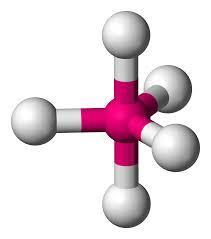
The structure of \[PC{l_5}\] is
a.) Trigonal bipyramidal
b.) Octahedral
c.) Pentagonal bipyramidal
d.) Square pyramidal
Answer
541.5k+ views
Hint: For finding out the hybridization of the given molecule we can use the hybridization formula, and by referring to the arrangement of $spdf$ orbitals we can conclude the structure of the given molecular formula.
Complete step by step answer:
First consider which is the central atom, in this question our central atom is Phosphorous. Now, since the central atom has been found we will consider the hybridization formula.
- The general formula of hybridization is is given as
$H = (V + X + C + A)/2$
Where,
$V = $ The number of valence electrons of the central atom.
$X = $ The number of monovalent atoms attached to the central atom.
$C = $Total positive charge on the molecule.
$A = $ Total negative charge on the molecule.
- Now, for \[PC{l_5}\] since we know that central atom is phosphorous and there are $5$ chlorine atom surrounding it, and the number of valence electron of phosphorus is $5$, then writing all the values;
Total number of valence electrons of Phosphorus; $V = 5$
The number of fluorine attached to iodine; $X = 5$
Total positive charge on the molecule; $C = + 0$
Total negative charge on the molecule; $A = - 0$
By putting all the above given values in the hybridization formula we get,
$H = (5 + 5 + 0 - 0)/2$
$H = 10/2$,
$H = 5$,
Now referring to the table given below:
By considering the above table we get to know that since our $H$ is $5$ the hybridization of $PC{l_5}$ is trigonal bipyramidal.

The correct answer is option “A” .
Note: In questions related to structures always remember to apply hybridization formula, and refer to the table given above, it is applicable to all compounds which have hybridization seven or less than it.
Complete step by step answer:
First consider which is the central atom, in this question our central atom is Phosphorous. Now, since the central atom has been found we will consider the hybridization formula.
- The general formula of hybridization is is given as
$H = (V + X + C + A)/2$
Where,
$V = $ The number of valence electrons of the central atom.
$X = $ The number of monovalent atoms attached to the central atom.
$C = $Total positive charge on the molecule.
$A = $ Total negative charge on the molecule.
- Now, for \[PC{l_5}\] since we know that central atom is phosphorous and there are $5$ chlorine atom surrounding it, and the number of valence electron of phosphorus is $5$, then writing all the values;
Total number of valence electrons of Phosphorus; $V = 5$
The number of fluorine attached to iodine; $X = 5$
Total positive charge on the molecule; $C = + 0$
Total negative charge on the molecule; $A = - 0$
By putting all the above given values in the hybridization formula we get,
$H = (5 + 5 + 0 - 0)/2$
$H = 10/2$,
$H = 5$,
Now referring to the table given below:
| VALUES OF H | HYBRIDIZATION | STRUCTURE |
| 2 | $sp$ | Linear |
| 3 | $s{p^2}$ | Trigonal planar |
| 4 | $s{p^3}$ | Tetrahedral |
| 5 | $s{p^3}d$ | Trigonal bipyramidal |
| 6 | $s{p^3}{d^2}$ | Octahedral |
| 7 | $s{p^3}{d^3}$ | Pentagonal bipyramidal |
By considering the above table we get to know that since our $H$ is $5$ the hybridization of $PC{l_5}$ is trigonal bipyramidal.

The correct answer is option “A” .
Note: In questions related to structures always remember to apply hybridization formula, and refer to the table given above, it is applicable to all compounds which have hybridization seven or less than it.
Recently Updated Pages
Why is there a time difference of about 5 hours between class 10 social science CBSE

In cricket, what is a "pink ball" primarily used for?

In cricket, what is the "new ball" phase?

In cricket, what is a "death over"?

What is the "Powerplay" in T20 cricket?

In cricket, what is a "super over"?

Trending doubts
What is meant by exothermic and endothermic reactions class 11 chemistry CBSE

Which animal has three hearts class 11 biology CBSE

10 examples of friction in our daily life

One Metric ton is equal to kg A 10000 B 1000 C 100 class 11 physics CBSE

1 Quintal is equal to a 110 kg b 10 kg c 100kg d 1000 class 11 physics CBSE

Difference Between Prokaryotic Cells and Eukaryotic Cells




